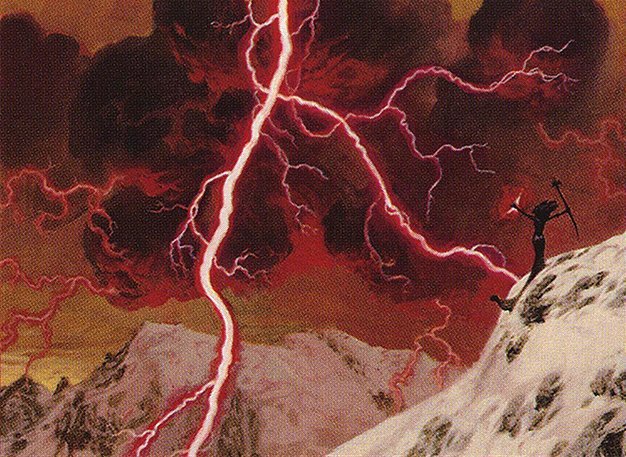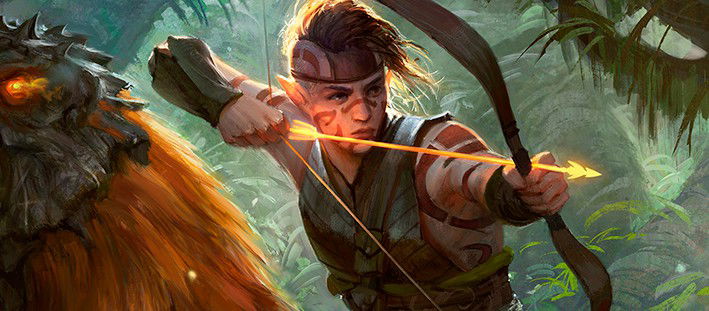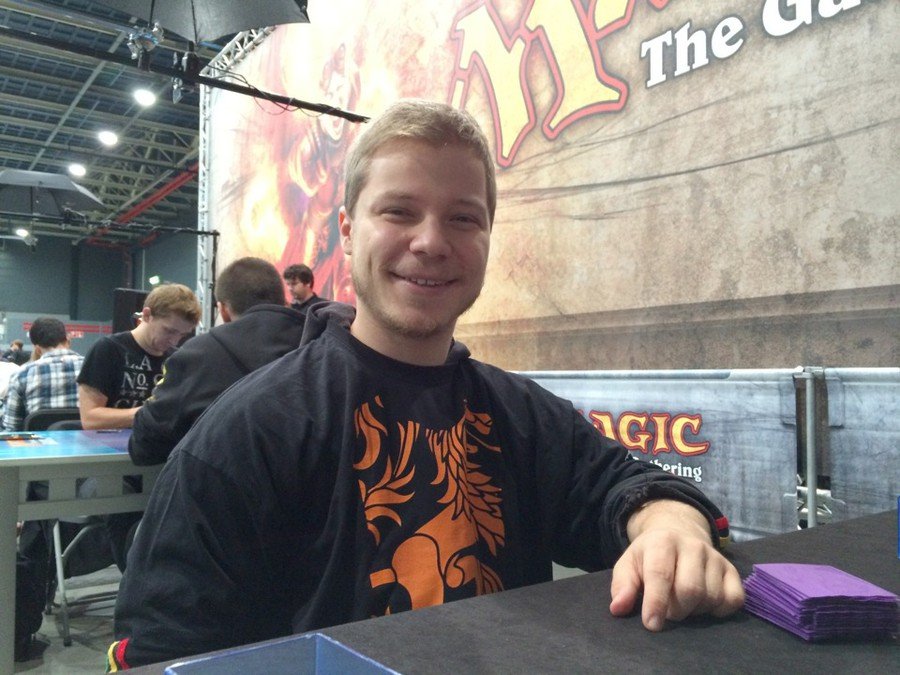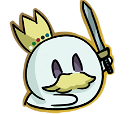Welcome to the Vampiric Tutor project.
The purpose behind this project is to introduce my readers and less experienced players to the world of theoretical Magic, trying to didactically bring fundamentals of the game, deckbuilding, rules, play interpretation, among other important points that go beyond the basic knowledge of Magic: The Gathering.
In this series of articles, I intend to develop a set of ideas that will start with more specific principles such as archetype identification and deckbuilding improvements, and then move on to more advanced topics.
Ad
So, I chose to start this project by introducing you to the main archetypes in the game today and how each of them can be elaborated.
First we will have an introduction, a general idea of how the archetype works, its history, its present, how we can categorize the decks that fit into this archetype and how we should build each of them.
Next, I'll be providing general concepts that can be used in building the archetype, what you should expect from your starting hands, and how to identify exactly which cards are favored over others when building your list.
I hope it can be useful for all of you to accompany me on this journey!
Introduction
Every game somehow has its composition of archetypes. Take a Multiplayer RPG, for example. You will usually have the Tanker, the Healer, the DPS, etc.
It's no different in Magic and traditionally, there are three macro-archetypes in the game: Aggro, Control and Combo, which are defined by their different play style and pacing in the game.
Today, in addition to these archetypes, there are several variants that define decks between micro-archetypes such as Midrange, Tempo, Big Mana and hybrid versions such as Combo-Control.
In this article, we'll talk about Aggro.
The simplest way to explain to a person how a Magic game works and how to win the game is to say that each player has 20 life points, and the first player to bring the opponent's life to zero wins the game.
Thus, the most efficient way to teach a player is usually using Aggro or Midrange decks, where the player needs to initially focus on mana costs and attacking.
It does not mean, however, that Aggro decks are the simplest decks to play, as Magic is a complex game and there is a real chain of decisions in each game and each turn that can (and should) be considered to complete Your only goal: to win the game.
In the case of Aggro decks, knowing how to maximize the efficiency of your cards and the damage or presence on the board generated by them is essential for the Aggro player, as otherwise it is possible for the deck to run out of gas when it shouldn't and lack enough damage to close the game while the opponent fails to establish their plan.
However, before we study the archetype, it is important to know how we arrived at the modern Aggro deck composition.
History
For this section of the article, I'm going to focus primarily on rotating formats, as this is where Aggro decks development is most constant and least repetitive, to create a read that is interesting without becoming repetitive in any way.
Determining the origin of aggro decks is practically impossible, as the strategy of using creatures and spells to bring the opponent's life to zero has existed since the game's origins, but the first official decklist record used in a Magic event of this strategy could be the deck used by the runner-up of Magic’s first World Championship, Bertrand Lestree:
Despite straying from the concept of current aggro decks, Bertrand's list contained everything that consists in many decks of the archetype today: low-cost creatures and a sizable amount of direct damage spells.
Ad
However, like most decks at that time, Bertrand's list suffered from a lack of refinement and the absence of much of the game philosophy we use in modern times, and despite having a similar structure to an aggro deck, the deck you can easily fit in as a "midrange" or even compare the lists to sealed decks, where you tend to have a lot of one-ofs of the best cards.
The first spark of what would later be called Aggro came at PTQ Atlanta in 1996, when Paul Sligh placed second with a decklist that would eventually revamp deck building in the game and lead to the introduction of the concept of tempo and mana curve
The idea was so innovative that the event's organizer even posted on a forum at the time during the week after the tournament commenting " I don't understand how this deck has come this far, but it has."
The concept behind Sligh was created by a friend of Paul, Jay Schneider, who back in 1994, in a visible predominance of Control decks (as the concept of Card Advantage became common among players way sooner), tried to create a list where he used all the mana possible in the best way and in the least amount of turns so that players would have problems getting to answer efficiently to all of its cards.
The Sligh became popular among players both for being innovative and accessible (a significant amount of the cards in the deck were common and uncommon), and after the release of the Tempest Block, the archetype became one of the top decks of the time and led Dave Price to win a Pro Tour with a list focused on the beatdown plan.
But it was still in 1996 that the concept and nomenclature of "Aggro" really came into existence in the hands of Ton Chanpheng, who won the Worlds that year with an archetype that would appear many times Magic until today: the White Weenie.
A curious fact about Chanpheng's list is that he has Sleight of Mind in his deck with no way to play it, as he forgot to add 4 Adarkar Wastes in his decklist, so he was forced to add Plains in the slot that would normally be from the painland.
Since then, Aggro decks have always been present in some way in the competitive scenario of virtually every format:
In 1997, Svend Geertsen was semifinalist in the Worlds with a list that would then be the first variant of Stompy, using creatures of high-power and low cost, along with spells to increase their power and Winter Orb to punish opponents who spent too much mana with their resources, as he could use Quirion Ranger to untap both lands and creatures.
In the early 2000s, Rebels emerged as one of the main decks of the format at the time and even led to Lin-Sivvi, Defiant Hero being banned from the Mercadian Masques block constructed.
In 2003, with the release of Onslaught giving tribal decks a support that hardly existed before, Wolfgang Eder reached the Worlds Top 8 with his Goblins deck, which contained an aggressive plan but could also play well in longer games thanks to Siege-Gang Commander and Patriarch's Bidding.
Ad
Back in 2004, the most feared Aggro deck in Magic history exploded: Affinity.
Affinity had everything an Aggro deck could ever want: low-cost creatures, direct damage, powerful sinergies, card advantage, and was extremely difficult for opponents to interact with everything you played.
The deck was so absurd that a total of 9 cards were banned at the time the deck dominated tournaments, which effectively extinguished any possibility that it could still exist.
Back in 2006, Craig Jones took second place on the Pro Tour Honolulu with the deck that would give rise to an archetype that for years has established itself as one of the best aggro deck options in competitive formats, called Zoo.
Zoo not only became one of the top decks in Standard and Extended, it was also for years one of the best options in the Legacy and even led to the banning of Wild Nacatl, a card that would be released a few years later, in Modern.
In 2008, with the release of Lorwyn, several tribal decks emerged and hung between Aggro, Tempo and Midrange, but the list that screamed the most Aggro at the time was not even tribal: The Mono Red list used by Michael Jacob had everything that still defines a good Mono-Red deck today!
It was from this time on that it became frequent to see Aggro decks opting to scale up the mana curve, betting on cost 4 or even cost 5 threats as long as these offered a big advantage on the board.
In 2009, we had Doran, a deck that consisted of using Doran, the Siege Tower as a low-cost threat with a multicolored manabase that even splashed blue or red occasionally.
As the deck was mostly made up of creatures, with the release of Conflux, Brian Robinson made it Top 8 on the Pro Tour Kyoto playing a blue-splash version of the deck, which was more accessible with Noble Hierarch and Ancient Ziggurat to use some powerful creatures like Rhox War Monk and Rafiq of the Many, which allowed the archetype to attack with a Doran on turn 3 for a total of 12 damage.
In 2011, amid the Caw-Blade’s oppression, many decks tried to adopt the Stoneforge Mystic package, and it was no different for Boros Stoneblade.
In 2012, it was Zombies' turn to take its place in the competitive landscape as the metagame's aggro deck, and with a strategy that included a mix of tribal synergies and benefits from creatures dying or being sacrificed, the deck became a predecessor to a strategy that it would gain a name of its own the following year.
Tom Martell won the Pro Tour Gatecrash in 2013 with an archetype that became known as the Aristocrats and would become one of the most synergistic and skill intensive decks of that season.
Many players may dismiss the Aristocrats as an Aggro deck and consider it an Aggro-Combo or a Midrange, but the deck's curve included a strong aggressive curve with Champion of the Parish along with other humans, and Falkenrath Aristocrat being the top of the curve as a 4/1 Haste and Flying that was practically indestructible on that list.
Ad
In 2014, it was Boros Burn, less oriented towards creatures and more oriented towards direct damage, a strategy that worked before in Modern and Legacy and that would stand out as one of the Aggro decks that the format would have to offer and would become present during all the Standard season from that time.
In 2017, Mardu Vehicles became a constantly present deck as a competitor in the face of so many absurd decks that ended up being banned, like some of its predecessors, it included an aggressive low curve, with creatures of high-power and low cost, while it could still play on top of grind and value with cards like Gideon, Ally of Zendikar or Chandra, Torch of Defiance.
And in 2018, BR Aggro was, without a shadow of a doubt, the best deck of the format by far, even with a questionable manabase, and brought negative reactions from the community, which even asked for the ban of Goblin Chainwhirler due to the limiting and overwhelming factor of this card created for certain decks and effectively dictating what was playable or not.
The deck was piloted by Javier Dominguez and consecrated him as world champion that year, which would make him be eternalized in Throne of Eldraine in the form of the Fervent Champion card.
With the release of Core Set 2020, a tribal deck stood out among the metagame's aggro decks for being able to set up a good clock, be disruptive and still have an engine that allowed you to have reach and put permanents in play for free: Vampires
The following year, in 2020, we could see two Aggro decks emerging and/or being predominant in the format: one was Mono-Red Aggro, which used a combination of low-cost threats with Anax, Hardened by the Forge and had a "free-win button" in combinations involving Anax and Embercleave or numerous creatures and









— Comentarios0
첫 댓글을 남겨보세요